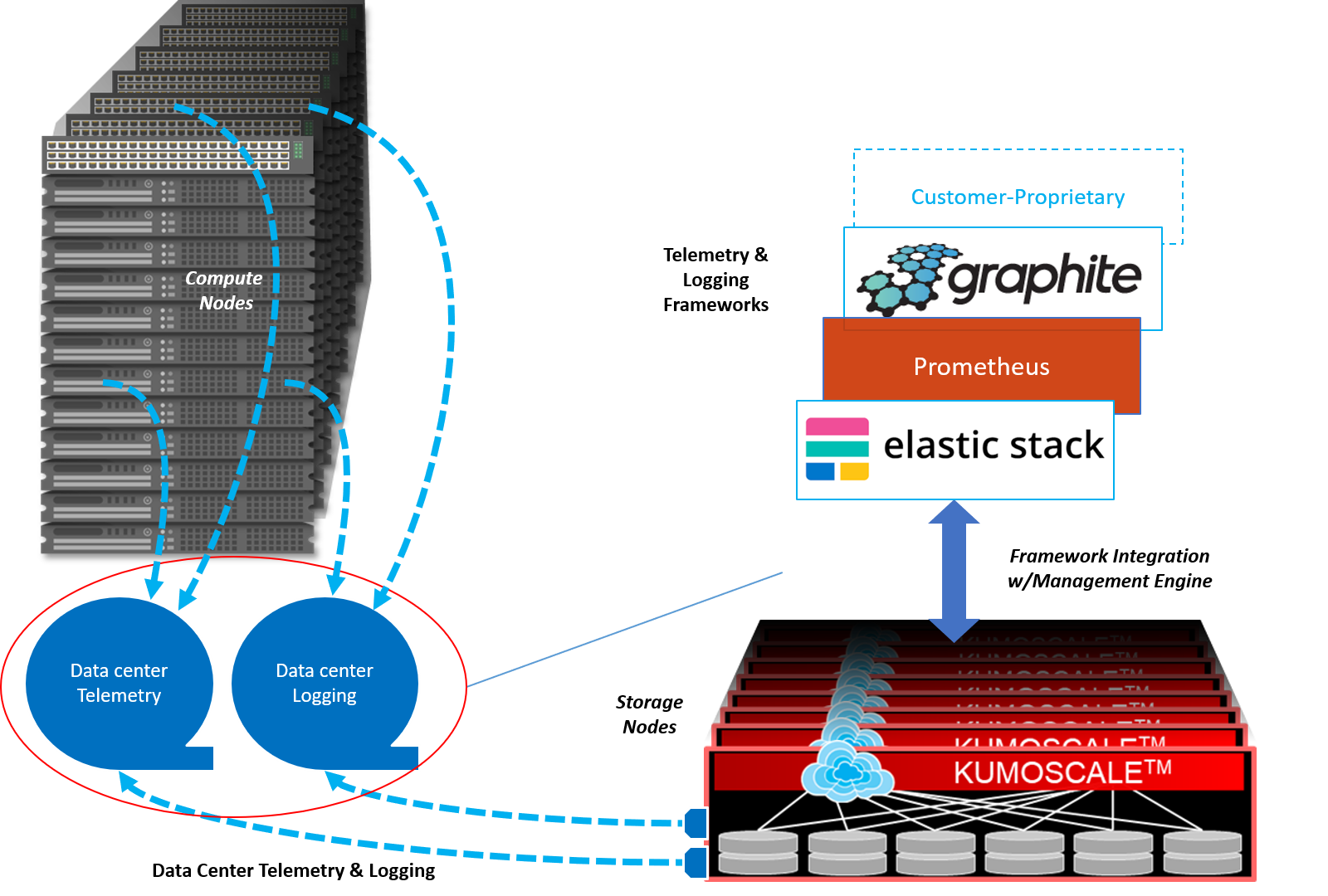As you read this headline, you may be wondering, what the heck is KumoScale™? KumoScale is a storage software suite that enables NVM Express™ (NVMe™) flash-as-a-service for on-premise private or hybrid cloud infrastructure. KumoScale software uses NVMe-over-Fabrics (NVMe-oF™) technology to implement a “storage node” containing a shared pool of NVMe SSDs that can be accessed over a data center network. This flash storage pool can be dynamically provisioned with on-demand capacity and performance to meet the exact requirements of any cloud-native application running on a remote compute node. KumoScale storage nodes are built with standard hardware platforms, which can cost-effectively scale out to 100s or 1,000s of nodes across the data center.
Sounds cool, but why do you need NVMe flash-as-a-service? Well, most cloud infrastructures today use self-contained application servers with a pre-determined amount of CPU, memory and direct-attached storage. As cloud workloads expand, you simply add more servers. The problem is in a cloud environment, users have different workloads sharing the same infrastructure, and it’s hard to predict in advance exactly the right CPU-to-storage ratio, limiting hardware utilization and application orchestration efficiency. Whatever size SSD is picked is likely wrong – one size does NOT fit all requirements. This variability results in either unused CPU or storage resources in each server – which multiplies quickly at scale. Public cloud data centers have already solved this problem by separating compute and storage resources, so disaggregation is a proven approach. However, most on-premise cloud infrastructure is still using direct-attached storage in the server node. With new industry standards and technologies like NVMe-oF and KumoScale, it is now possible to build a more agile cloud infrastructure with optimum utilization of flash storage and application workload blending.
But wait, we already have network-attached storage with Fibre Channel and iSCSI right? Yes, but those are more than 20-year-old SCSI-based networking protocols which can be a bottleneck for accessing high performance storage like NVMe flash. For the modern cloud data center, the NVMe-oF protocol uniquely retains the extremely low latency performance of direct-attached NVMe SSDs – and runs on existing Ethernet-based data center networks.
Back to the reason for this blog post: we recently announced that KumoScale software now supports two cloud-native telemetry frameworks: Prometheus® and Graphite. While we continue to build advanced functionality into KumoScale software for disaggregated flash management, rack-level data resiliency and analytics-based provisioning, we are spending just as much effort collaborating with the cloud software stack ecosystem to integrate KumoScale software. As we talk with customers, one requirement is clear: they want disaggregated storage software like KumoScale integrated into their existing cloud orchestration, automation, telemetry, and logging frameworks. You can’t introduce a new NVMe flash-as-a-service software with proprietary tools. In this way, existing tools can be used to enable all cloud infrastructure to be monitored and controlled together.
KumoScale software was architected from the start with a flexible set of APIs that enable it to easily snap into common open source, third party or customer-special frameworks. No proprietary “pane of glass” is required. As an example of this approach, the latest KumoScale software release (v3.11) now supplies a rich telemetry feed which records information about all KumoScale storage nodes across the data center. As shown in the diagram below, this telemetry feed is now integrated with open source frameworks Graphite and Prometheus, and the management interfaces are designed to easily adapt to any customer-special framework.

The KumoScale telemetry feed contains granular time-series measurements on workload and performance statistics. Telemetry data is tagged so that workload and performance can be analyzed on a per-volume, per-interface, per-drive, or per-storage class basis. Similarly, KumoScale software provides a stream of log information that records all volume provisioning and drive mapping changes, changes in the hardware or software configuration, and system state and health periodically. Along with telemetry time series, this log stream allows users to correlate point-in-time events with resulting changes in I/O rates or performance. Logging in the popular Syslog format is available, and integration with Elasticsearch is in development. Stay tuned for more news on KumoScale software integration with other cloud infrastructures such as Kubernetes container orchestration.
You can find more information about the KumoScale storage software suite for private clouds at www.kumoscale.com.
Notes:
All company names, product names and service names may be trademarks of their respective companies.
NVMe is a registered trademark of NVM Express, Inc
Prometheus is a registered trademark of the Linux Foundation.